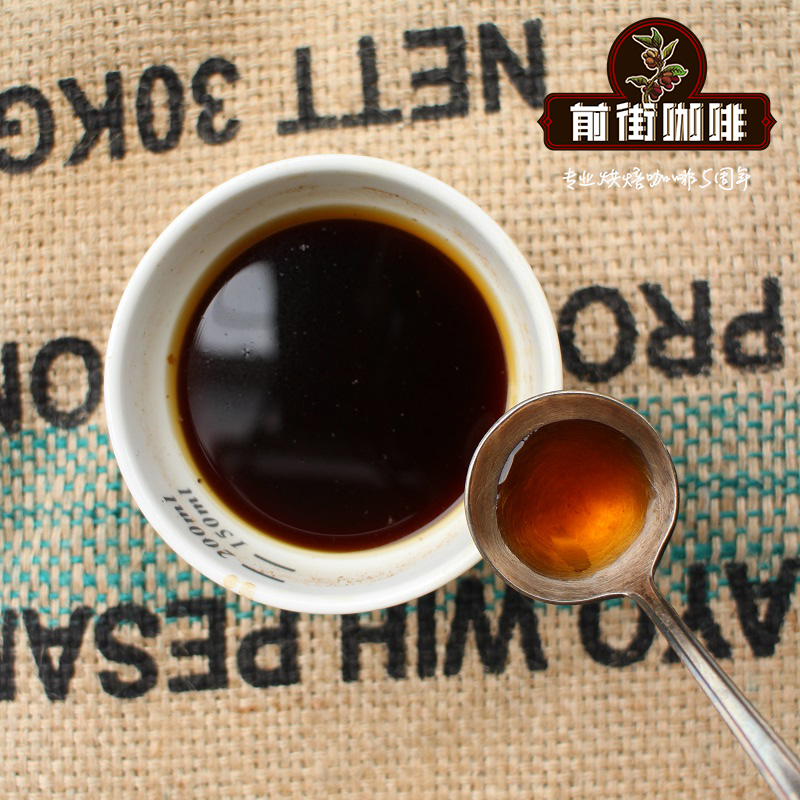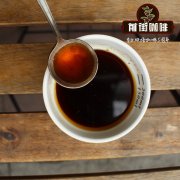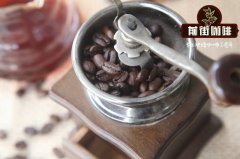Introduction of Indonesian coffee producing area Sulawesi coffee flavor characteristics of Sulawesi coffee hand brewing

Professional coffee knowledge exchange more coffee bean information please follow the coffee workshop (Wechat official account cafe_style)
Indonesia is the largest archipelago country in the world. Arabica tree species coffee was introduced and planted during the Dutch rule in the 18th century. The main producing areas are in Sumatra, Java and Sulawesi. Mantenin's deep, low-acidity and rich taste makes people call it the 'most important coffee in the world'. It is also the fourth largest producer in the world with an annual output of 7 million bags. Coffee is harvested twice a year from May to June and from September to October, with the highest production in Sumatra and Aceh. The scale of the coffee farm is not about 1-3 hectares. Mantenin coffee treatment in Indonesia generally adopts semi-washing method. Coffee farmers harvest ripe coffee beans, remove the external peel and pulp but retain the thin film tissue on the coffee beans, and remove the poor beans that do not bear fruit and float on the water surface through the process of immersion and fermentation, while the strong and sunken beans can be sunlit or directly to the ground with the surface film. Finally, a dryer is used to make the moisture content reach a unified standard. The most unique thing is to use parchment to cover coffee beans with a thin film to maintain a moisture content of 18%. Before shipment, the coffee bean surface film is polished and cleaned. The world calls this section of the special treatment method called Indonesian-style semi-washing method, large coffee processing plants can accurately control each treatment process, flavor and taste has a certain level. On the other hand, small coffee farmers treat raw beans in their own yard, and the flavor will vary according to the handling methods and skills of different coffee farmers.
The coffee produced in Sulawesi, Indonesia's third largest island, accounts for only 9% of Indonesia's coffee production each year. Coffee grows in the rainforest of 750-1500 meters above sea level. Most of the high-quality coffee is grown around the Toraja platform in the southwest. Tonaga is located at an altitude of 1500 meters above sea level on the equatorial belt shrouded with rain and clouds in the afternoon. Coupled with the fertile volcanic soil, these are the best natural climate and environment for coffee growth. Most Indonesian coffee is sold, sold and exported by local coffee companies. Direct coffee has been introduced to small-scale Binalestari coffee merchants in Sulawesi Tonaga. Coffee is several grades G1 in Arabica, and the color of raw coffee beans is long rice-shaped and bright emerald green. Different from the yellowish brown of gold manning and Sumatra manning, and there are fewer defective beans and poorly fermented white beans, it is a small manor coffee with less disturbing earthy smell.
Sulawesi Tonaga (Toraja) has the label "Bina lestari" on the coffee bean bag.
Coffee tree species is Arabica, and the best grade is G1 first-grade beans (G2.G3 in sequence)
It is suggested that the filter cup V60, the grinding degree of Fuji 3.5, the water temperature 90 °, the ratio of powder to water 1: 15, 15 grams of powder, 225 grams of water, the total cooking time is 2 minutes.
Important Notice :
前街咖啡 FrontStreet Coffee has moved to new addredd:
FrontStreet Coffee Address: 315,Donghua East Road,GuangZhou
Tel:020 38364473
- Prev

Kenya Wonder Field introduces the flavor characteristics of Kenyan coffee how to drink Kenyan coffee?
Professional coffee knowledge exchange more coffee bean information please follow Coffee Workshop (Wechat official account cafe_style) Kenya is a model country for producing fine coffee beans. Coffee was introduced from Britain in 1900, and only the traditional Arabica did not have the best bourbon species of SL28 and SL34 in Kenya until 1950, all collected water treatment. Graded AA PLUS mining
- Next

What are the flavor and taste characteristics of multi-tower Dota boutique coffee in Tarazhu, Costa Rica?
Professional coffee knowledge exchange more coffee bean information please follow the coffee workshop (Wechat official account cafe_style) Costa Rica Tara Zhu production area multi-tower Dota boutique coffee flavor and taste characteristics? The first country in Central America to grow coffee; government support for development began in Costa Rica in 1729, when it was introduced from Cuba. This makes Costa Rica
Related
- Detailed explanation of Jadeite planting Land in Panamanian Jadeite Manor introduction to the grading system of Jadeite competitive bidding, Red bid, Green bid and Rose Summer
- Story of Coffee planting in Brenka region of Costa Rica Stonehenge Manor anaerobic heavy honey treatment of flavor mouth
- What's on the barrel of Blue Mountain Coffee beans?
- Can American coffee also pull flowers? How to use hot American style to pull out a good-looking pattern?
- Can you make a cold extract with coffee beans? What is the right proportion for cold-extracted coffee formula?
- Indonesian PWN Gold Mandrine Coffee Origin Features Flavor How to Chong? Mandolin coffee is American.
- A brief introduction to the flavor characteristics of Brazilian yellow bourbon coffee beans
- What is the effect of different water quality on the flavor of cold-extracted coffee? What kind of water is best for brewing coffee?
- Why do you think of Rose Summer whenever you mention Panamanian coffee?
- Introduction to the characteristics of authentic blue mountain coffee bean producing areas? What is the CIB Coffee Authority in Jamaica?

